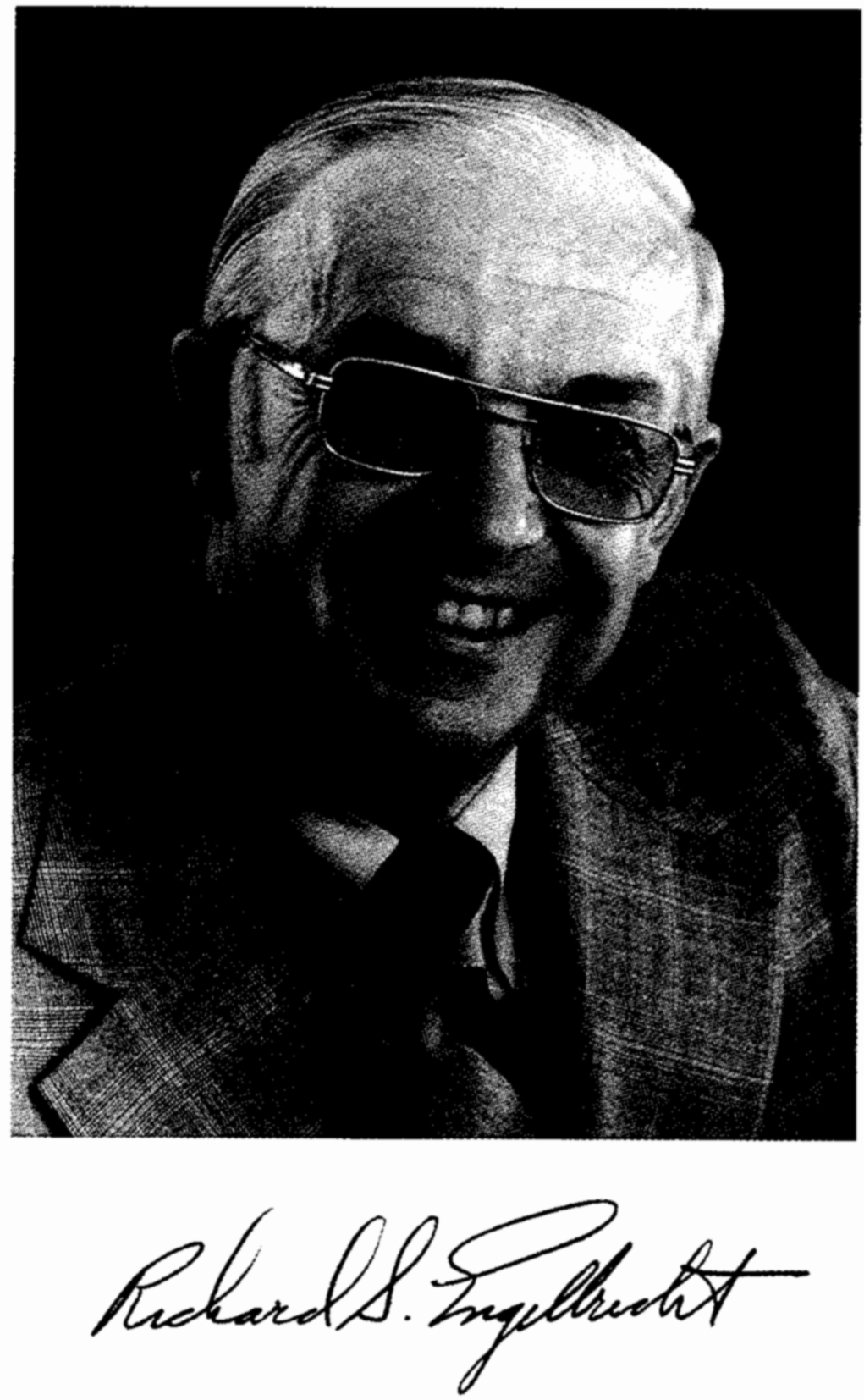Page 65
ROLF ELIASSEN
1911–1997
BY PERRY L. MCCARTY
ROLF ELIASSEN, Silas H. Palmer Professor Emeritus of Civil Engineering at Stanford University and founder of Stanford's environmental engineering program, died in Palo Alto, California, on Friday, March 14, 1997.
Rolf was born in Brooklyn, New York, on February 22, 1911. He earned his bachelor's degree in civil engineering in 1932, a master's degree in 1933, and a doctor of science degree in sanitary engineering in 1935, all from the Massachusetts Institute of Technology. After graduating in the depths of the Great Depression, he held a variety of positions such as design engineer with J.N. Chester Engineers, Pittsburgh, Pennsylvania, and sanitary engineer with Dorr-Oliver, Inc., Stamford, Connecticut. He began his teaching career in 1939 as assistant professor of civil engineering at the Illinois Institute of Technology (in Chicago), and then in 1940, he moved to New York University as associate professor of sanitary engineering.
Rolf married the former Mary Hulick of Easton, Pennsylvania, in 1941. Shortly thereafter, World War II erupted, and he left university life for four years to serve as a major in the U.S. Army Corps of Engineers, supervising sanitary engineering facilities at army installations in the United States. Returning to New York University after the war as professor of sanitary engineering, he directed his research toward finding safer ways to dispose of the enormous quantities of solid wastes generated in
Page 66
New York City and methods for controlling the city's growing air pollution problems.
In 1949 Rolf moved to become professor and head of the Sanitary Engineering Division at the MIT, where he developed a nationally renowned program. His teaching skills were recognized early through receipt of the George Westinghouse Award of the American Society for Engineering Education. He realized that one of the major problems with the emerging nuclear power industry was the production of radioactive wastes, so he turned his research activities toward finding ways to stabilize such materials through vitrification for safer storage or disposal. This approach is now being used at U.S. Department of Energy facilities. From 1960 to 1961 he served as acting head of MIT's Civil Engineering Department.
In 1961 Stanford University invited Rolf to join its Department of Civil Engineering to form a new program in environmental engineering. His early research with solid wastes, air pollution control, and radioactive waste disposal suggested to him that environmental problems were rapidly expanding beyond the traditional framework of water supply and wastewater disposal. A much broader approach to their solution was needed, one that involved interdisciplinary collaboration between engineering and the social and natural sciences. Rolf felt that Stanford provided a unique climate for such cooperative activities. He founded a new and flexible environmental engineering program that permitted students with a wide range of backgrounds and career goals to obtain a graduate education that met their individual needs. This approach proved to be most successful, and his program continues to serve as a model for programs throughout the country.
Rolf believed that environmental quality should be the concern not only of civil engineers but also of the community at large. Acting on this belief, he developed an undergraduate course in 1961 called CE 170: “Man and His Environment,” a course that continues to be offered at Stanford today, thirty-six years later. This 8:00 a.m. elective course quickly became popular, attracting hundreds of students from all disciplines each year, an attendance so large that the course eventually was held in a
Page 67
large auditorium. Preceding by several years the popular environmental movement symbolized by Earth Day in 1970, his course provided the nation's first integrated approach to the environmental problems of air, water, and solid wastes.
Rolf was a favorite among students, who often were found in long lines at his office for counsel, not only about the content of his courses, but also about personal choices, problems, and career goals. He was always most considerate and supportive of staff and students alike, and was an exceptional mentor for his younger colleagues. He and his wife, Mary, were frequent and cordial hosts for students in their home. He became the Silas H. Palmer Professor of Civil Engineering in 1969, and emeritus professor of civil engineering in 1974.
But academic life did not represent his sole endeavor. Rolf was an active engineering consultant and adviser to the federal government throughout his career. He was a registered professional engineer in six states and was a partner from 1961 to 1967 of Metcalf and Eddy, Engineers, one of the largest and oldest environmental engineering firms in the country. He subsequently became senior vice-president, vice-chairman of the board, and then chairman of the board in 1973. His consulting experiences provided a rich source of material that enlivened his classroom teaching and enhanced his mentoring of graduate students.
With his broad experience and knowledge of environmental matters, Rolf was frequently sought as an adviser to federal agencies, including the Office of Science and Technology, Executive Office of the President; the Atomic Energy Commission; the Department of the Interior; the Department of Commerce; the Department of Defense; the Energy Research and Development Administration; the Public Health Service; and the Federal Power Commission. His international assignments were equally broad, including projects with the Agency for International Development, the World Health Organization, the United Nations, and the International Atomic Energy Agency. His many important contributions to the environment have been broadly recognized and earned him election to the National Academy of Engineering, the American Academy of Arts and Sciences, the American Academy of Environmental Engineering, and honorary mem-
Page 68
bership in the American Society of Civil Engineers.
Memorial services were held on March 18, 1997, at the First Congregational Church, Palo Alto, where Rolf had been an active member for many years. He is survived by his wife, Mary, of Palo Alto; his two sons, Thomas Eliassen of Carlisle, Massachusetts, and James H. Eliassen of Colorado Springs, Colorado; and five grandchildren.







